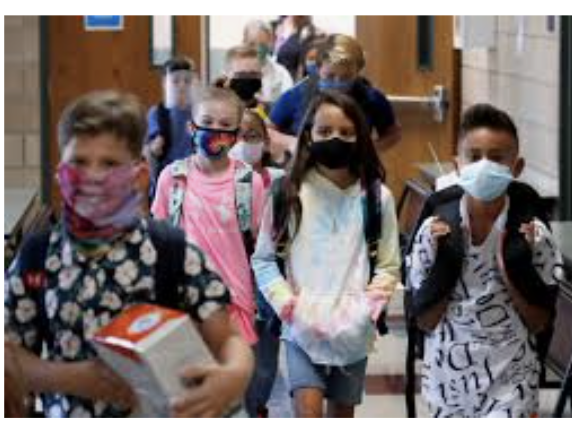It's like COVID only in that, like COVID masks, teachers unions sacrifice the children to profit themselves
/NY lawmaker compares charter school expansion to COVID-19 crisis
A Long Island lawmaker likened the spread of charter schools to the deadly COVID-19 pandemic in a bizarre rant at an NAACP-sponsored event, The Post has learned.
State Assemblyman Phil Ramos went off during his virtual testimony at the education forum on Jan. 24.
“I am in vehement opposition to charter schools. From what I’ve seen, it’s just another system created that imposes a discriminatory system on our people,” Ramos griped.
“Basically, for the second half of the 1900s, racism — in your face racism, burning crosses — kind of for the most part went undercover and modern-day racism is conducted with a calculator. A calculator that creates a formula. The sum total of that formula always ends up being a disparity in our communities.”
Ramos claimed that charter schools are “monetizing the education of our children into a private business” and “prey on our communities.” State law bars charter schools — whose students are selected via lottery — from operating as for-profit entities.
“When people pushed back on that, they morphed again — just like the coronavirus. And they morphed and said, ‘We except all students,'” he said.
“In a back-door way, they cream the students out,” he railed. “When they [students] don’t perform well, they find every excuse to try to expel them and put them back into public schools who are forced to accept them. Public schools would be better also if they only kept the high-scoring students.”
But numerous reports of state test data in New York show that students in charter schools — predominately black and Hispanic — typically outperform their peers in nearby traditional public schools and are among the top performers in New York City and the state when including even the wealthiest suburban school districts.
Ramos’ criticism parrots those of the teachers’ union. The New York State United Teachers political action committee has donated $23,350 to his campaigns, according to reports filed with the state Board of Elections.
The Democratic legislator also [slammed] supporters as “poverty pimps” who exploit residents “yearning” for better conditions.
In fact, the charter schools are filled with students whose parents are "yearning for better conditions” — that’s why they try so desperately to get them out of union schools.
… According to the report, 88 percent of SUNY charters in New York City did better than their neighboring traditional public schools on the English Language Arts exam in 2019, the last given before the coronavirus pandemic upended schools.
When it came to math, 91 percent of SUNY-authorized charters bested their surrounding local district schools, according to the study.
The difference between charters and traditional public schools in the city was greatest in The Bronx, where there are 58 of the alternative schools.
The number of Bronx students who reached proficiency at SUNY charters was 28 percentage points higher in English and 35 percentage points more in math than neighboring public schools.
For example, 84 percent of students at the Academic Leadership Charter School in The Bronx were proficient in English, 53 points higher than the 31 percent who passed the exam in surrounding schools in District 7 and 50 points higher than all other Bronx public schools.
Similarly, 78 percent of Academic Leadership students were deemed proficient on the math exam compared to 26 percent of their counterparts in District 7 — a 52 point gap — and 48 percentage points higher than all other Bronx students.
Charter schools are privately managed, publicly funded schools that are exempt from both the Department of Education bureaucracy and union contracts, giving them more flexibility and independence in setting curriculum and standards and managing the work force.
The alternative charter schools typically have a longer school day and school year than traditional public schools. Students are selected through a lottery.

